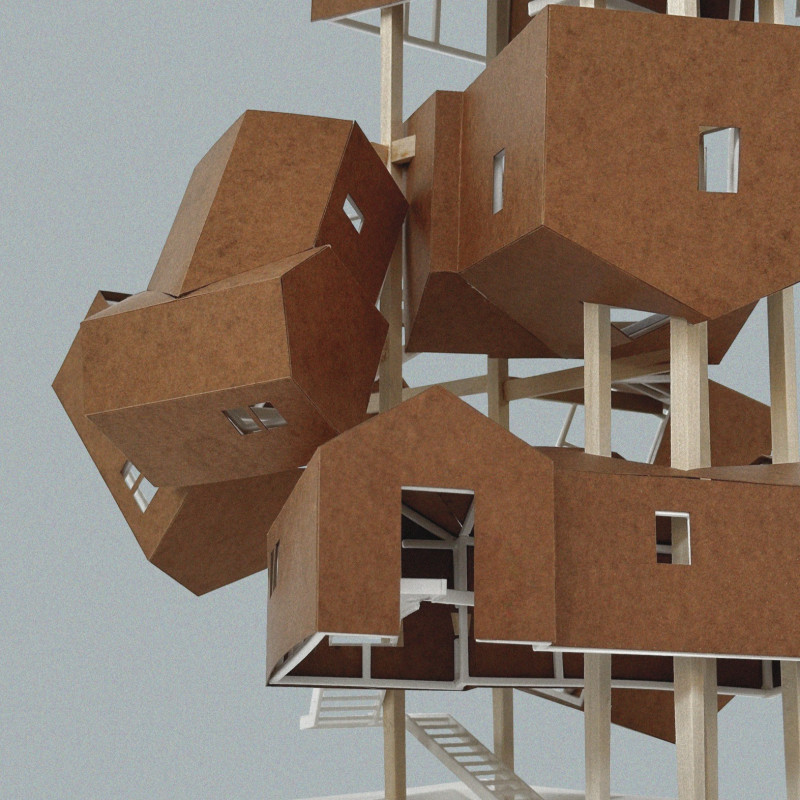5 key facts about this project
At its core, the architecture of the project emphasizes transparency and connectivity, achieved through the careful arrangement of spaces and the intentional use of materials. Large expanses of glass dominate the façade, blurring the lines between the interior and exterior. This design choice allows ample natural light to flood the interiors, promoting a welcoming atmosphere that encourages interaction among users. The glazing also provides panoramic views of the surrounding landscape, enhancing the occupants' connection to the outdoors and creating a sense of openness that is often sought in urban environments.
The function of the project is diverse, catering to a wide audience. It includes areas designated for community gatherings, flexible workspaces, and public amenities. By offering versatile spaces, the design encourages a variety of activities and interactions, making it a focal point for the local population. The layout is designed with accessibility in mind, ensuring that all areas are easily navigable, which reinforces the project's aim of inclusivity.
One of the standout features of the project is its integration of sustainable design principles. The use of sustainably sourced materials, such as reclaimed timber and recycled metals, not only minimizes environmental impact but also adds an element of authenticity to the structure. The roof design incorporates green technologies, including solar panels that harness renewable energy, further solidifying the project’s commitment to sustainability. These elements work together to create a building that is not only functional but also environmentally responsible.
Landscape integration plays a crucial role in the overall design. The architects have carefully considered the site context, incorporating native plant species and natural landscaping to enhance biodiversity. Outdoor spaces are designed to complement the building's use, providing areas for relaxation, social interaction, and community events. The firm commitment to blending the building with its surrounding landscape demonstrates a clear understanding of ecological responsibility while enhancing the aesthetic appeal of the project.
In terms of its architectural details, the design employs a minimalist approach characterized by clean lines and a muted color palette. This choice serves to create a calming environment, allowing the activities within to take precedence. Thoughtful details, such as custom lighting fixtures and strategically placed seating areas, contribute to the user experience, encouraging occupants to spend time in both communal and private spaces.
The unique design approaches taken in this project underline a dedication to not only meeting the practical needs of the community but also to enhancing their quality of life. By prioritizing user engagement, sustainability, and environmental consciousness, the building stands as a testament to thoughtful architectural practices that respect both the users and the context in which it exists.
As you explore the project further, consider delving into architectural plans, architectural sections, and other architectural designs and ideas that illustrate the depth of thought behind this endeavor. These resources will provide a more comprehensive understanding of how the various elements come together to create a cohesive and functional architectural solution.


























